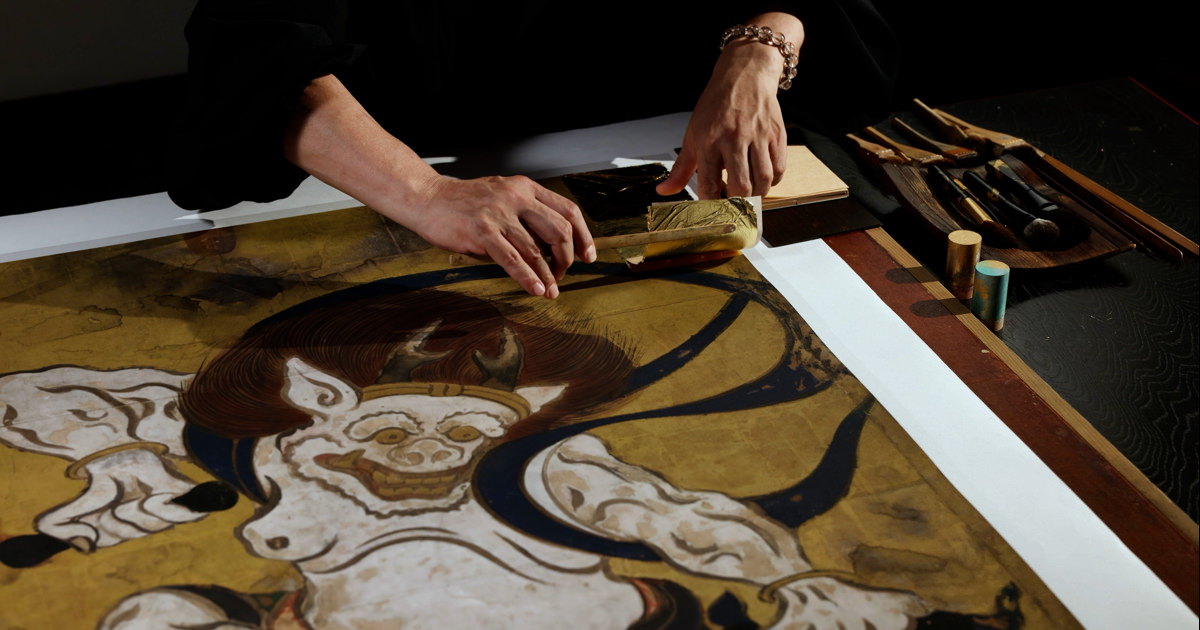
Ikeda Koson / National Museum of Asian Art, Smithsonian Institution, Freer Collection, Purchase — Harold P. Stern Memorial Fund and funds provided by the Friends of the National Museum of Asian Art in appreciation of James W. Lintott and his exemplary service to the Galleries as chair of the Board of Trustees (2011-2015), F2014.7.1-2
These images are based on the high resolution facsimile produced by the Tsuzuri Project. Unauthorized copying, duplication, or transfer of these images is strictly prohibited.
Maple leaves on a stream (front); mountain views (reverse)
High-resolution facsimiles
- Material
- printed, gold on washi paper(front)
printed on washi paper(reverse) - Period of creation
- Tsuzuri Project Stage 16 2023—2024
- Recipient
- Agano City (Collaborator for utilization: Niigata City)
Original
- Artist
- Ikeda Koson
- Historical era
- Edo (19th century)
- Material
- Ink, color, and gold on washi paper(front)
ink on washi paper(reverse) - Medium
- Pair of six-fold screens
- Size
- Each screen H166.3 × W343.2 cm
- Collection
- Smithsonian's National Museum of Asian Art
Description
Ikeda Koson, whose hometown is believed to be near Suibara in Echigo Province (currently the city of Agano in Niigata Prefecture), studied under Sakai Hōitsu, who established the Edo Rinpa school, and was active toward the end of the Edo period as a leading disciple alongside Suzuki Kiitsu, his senior disciple.
This double-sided folding screen piece is a masterpiece by Koson. On the front side is a vibrant world in which an ultramarine river flows between autumn leaves and autumn flowers, with gold boldly applied in the background. In contrast, on the rear side is a waterside scene with a mountain range in the background, painted in monochrome ink wash. From the note written on the box, believed to have been written by the artist himself, it is revealed that Koson painted this work in his home in Hisamatsuchō in Ryōgoku, where he lived from his late 40s to the year of his death; and from the signature and inscription on the front and back, it is revealed that this work was completed while Koson was in his 50s, at the height of his powers, with the autumn leaves and stream painting being completed in 1856 and the mountain and water painting being completed in 1858.






